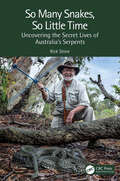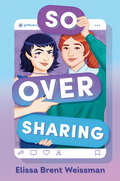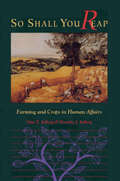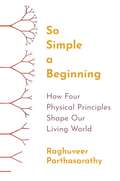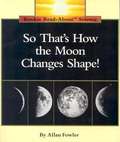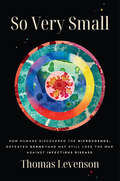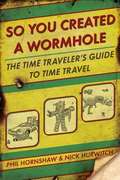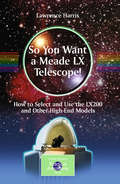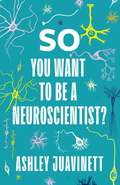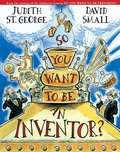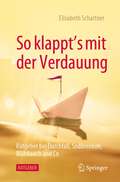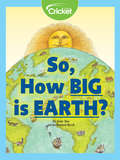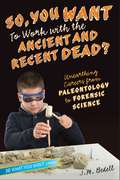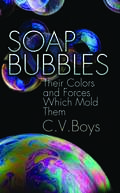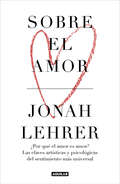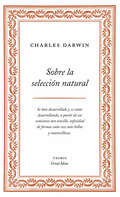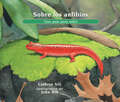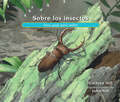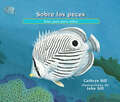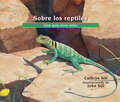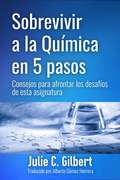- Table View
- List View
So Many Snakes, So Little Time: Uncovering the Secret Lives of Australia’s Serpents
by Rick ShineSnakes are creatures of mystery, arousing fear in many people but fascination in a few. Recent research has transformed our understanding of the behaviour and ecology of these animals, revealed their important roles in diverse ecosystems, and discovered new and effective ways to conserve their populations and to promote coexistence between snakes and people. One of the leading contributors to that scientific revolution has been Prof Rick Shine. Based in Australia, whose snake fauna is diverse and often dangerous, his experiences and anecdotes will inspire a new generation of serpent scientists. Spellbinding stories highlight the challenges, frustrations, and joys of discovery, and give the reader a greater appreciation of these often-slandered slithering reptiles.Key Features Documents the important role played by a preeminent herpetologist. Focuses on research conducted in Australia, especially on snakes. Summarizes highly influential conservation studies. Explores the ways in which research has deepened our understanding of snakes.
So Many Sounds (Houghton Mifflin Vocabulary Reader Accompanies Journeys)
by Ashlyn AdamsNIMAC-sourced textbook <P><P>Level F DRA 10 Science Strategy-Monitor/Clarify
So Over Sharing
by Elissa Brent WeissmanIn this timely contemporary middle grade novel from award-winning author Elissa Brent Weissman, two girls find their private struggles against their influencer mothers going very publicQuiet, introverted Hadley and rough-around-the-edges Willow have one big main thing in common: both their moms have gained a huge online following sharing every detail of their lives. Hadley&’s mom—Phoebe of @PhoebeAndJay fame—loves to share all the terrible, down and dirty bits about raising kids while Willow&’s mom Rosalind at the up-and-coming @MoonbeamsAndMarigold basks in the glow of motherhood. If getting all her life's moments (including an almost decade old viral potty training video) shared online isn't enough, Hadley&’s starting a new school in a new neighborhood and desperately trying to keep her mom&’s identity a secret while Willow is struggling with a recent life-changing announcement from her mom who, it turns out, is not getting out of the influencer world anytime soon. As the two girls build a friendship on a private Instagram page and share the pains of having a momfluencers, they come up against the same question—how long will they have to share their lives with everyone?
So Shall You Reap: Farming And Crops In Human Affairs
by Otto Solbrig Dorothy J. SolbrigSo Shall You Reap is a broad-gauged exploration of the intersections of farming and history. Beginning with the prehistorical era, Otto and Dorothy Solbrig describe the evolution of farming. When and how did people learn to irrigate, to fertilize, to rotate their crops -- and why? Along with its fundamental importance to history, farming has radically altered the physical world. Natural landscapes have been completely transformed to provide room for growth on a large scale of a few species of plants and even fewer species of domesticated animals. Agriculture has altered the earth's biosphere and changed its geosphere: The soil has been modified, forests have been felled, swamps have been drained, rivers have been dammed and diverted. So Shall You Reap presents a fresh and informed perspective on how farming and the crops we grow have changed us and our environment. By understanding the nature of the origins and evolution of agriculture, we will be better prepared to anticipate what the future may hold in store, and what must be done to increase food production while minimizing environmental problems.
So Simple a Beginning: How Four Physical Principles Shape Our Living World
by Raghuveer ParthasarathyA biophysicist reveals the hidden unity behind nature&’s breathtaking complexityThe form and function of a sprinting cheetah are quite unlike those of a rooted tree. A human being is very different from a bacterium or a zebra. The living world is a realm of dazzling variety, yet a shared set of physical principles shapes the forms and behaviors of every creature in it. So Simple a Beginning shows how the emerging new science of biophysics is transforming our understanding of life on Earth and enabling potentially lifesaving but controversial technologies such as gene editing, artificial organ growth, and ecosystem engineering.Raghuveer Parthasarathy explains how four basic principles—self-assembly, regulatory circuits, predictable randomness, and scaling—shape the machinery of life on scales ranging from microscopic molecules to gigantic elephants. He describes how biophysics is helping to unlock the secrets of a host of natural phenomena, such as how your limbs know to form at the proper places, and why humans need lungs but ants do not. Parthasarathy explores how the cutting-edge biotechnologies of tomorrow could enable us to alter living things in ways both subtle and profound.Featuring dozens of original watercolors and drawings by the author, this sweeping tour of biophysics offers astonishing new perspectives on how the wonders of life can arise from so simple a beginning.
So That's How the Moon Changes Shape! (Rookie Read - About Science)
by Allan FowlerA simple explanation of the moon and why it changes shape throughout the month.
So Very Small: How Humans Discovered the Microcosmos, Defeated Germs--and May Still Lose the War Against Infectious Disease
by Thomas LevensonThe centuries-long quest to discover the critical role of germs in disease reveals as much about human reasoning—and the pitfalls of ego—as it does about microbes.&“Essential reading . . . Thomas Levenson brings to brilliant life the social history of medical detective work and illuminates the fascinating world of pathogenic microbes.&”—Deborah Blum, New York Times bestselling author of The Poison SquadScientists and enthusiastic amateurs first confirmed the existence of living things invisible to the human eye in the late seventeenth century. So why did it take two centuries to connect microbes to disease? As late as the Civil War in the 1860s, most soldiers who perished died not on the battlefield but of infected wounds, typhoid, and other diseases. Twenty years later, the outcome might have been different, following one of the most radical intellectual transformations in history: germ theory, the recognition that the tiniest forms of life have been humankind&’s greatest killers. It was a discovery centuries in the making, and it transformed modern life and public health.As Thomas Levenson reveals in this globe-spanning history, it has everything to do with how we see ourselves. For centuries, people in the West, believing themselves to hold God-given dominion over nature, thought too much of humanity and too little of microbes to believe they could take us down. When nineteenth-century scientists finally made the connection, life-saving methods to control infections and contain outbreaks soon followed. The next big break came with the birth of the antibiotic era in the 1930s. And yet, less than a century later, the promise of the antibiotic revolution is already receding due to years of overuse. Is our self-confidence getting the better of us again?So Very Small follows the thread of human ingenuity and hubris across centuries—along the way peering into microscopes, spelunking down sewers, visiting army hospitals, traipsing across sheep fields, and more—to show how we came to understand the microbial environment and how little we understand ourselves. Levenson traces how and why ideas are pursued, accepted, or ignored—and hence how human habits of mind can, so often, make it terribly hard to ask the right questions.
So You Created a Wormhole
by Phil Hornshaw Nick HurwitchWelcome, intrepid temporal explorers, to the world's first and only field manual/survival guide to time travel! DON'T LEAVE THIS TIME PERIOD WITHOUT IT!Humans from H. G. Wells to Albert Einstein to Bill & Ted have been fascinated by time travel-some say drawn to it like moths to a flame. But in order to travel safely and effectively, newbie travelers need to know the dos and don'ts. Think of this handy little book as the only thing standing between you and an unimaginably horrible death-or being trapped forever in another time or alternate reality. You get:Essential time travel knowledge: Choosing the right time machine, from DeLoreans to hot tubs to phone booths-and beyond What to say-and what NOT to say-to your doppelganger Understanding black holes and Stephen Hawking's term "spaghettification" (no, it's not a method of food preperation; yes, it is a horrifically painful way to meet your end) The connection between Einstein's General Theory of Relativity, traversing wormholes and the 88 mph speed requirement The possible consequences of creating a time paradox-including, but not limited to, the implosion of the universe Survival tips for nearly any sticky time travel situation: How to befriend a dinosaur and subsequently fight other dinosaurs with that dinosaur Instructions to build your very own Rube Goldberg Time Machine Crusading-for fun and profit Tips on battling cowboys, pirates, ninjas, samurai, Nazis, Vikings, robots and space marines How to operate a microwave oven Enjoying the servitude of robots and tips for living underground when they inevitably rise up against us
So You Want a Meade LX Telescope!
by Lawrence HarrisThe Meade LX200 series of telescopes was introduced in 1992 and represented a giant step forward in technology for amateur astronomers - computer control. The LX200 series telescopes were an instant success and have outsold all other astronomical telescopes put together. Steady development has continued to the present day, and LX200s are available in a range of apertures from 8-inch through the giant 16-inch, which is widely installed in university astronomy departments and the smaller public observatories. For anyone considering buying a high-end Meade telescope, the book offers an experienced user's guide to what can actually be achieved with it. So You Want a Meade LX Telescope also provides detailed discussions about some of the many software packages available to aid optimizing and actually using the scope. The typical results are discussed so readers can know what to expect. Also reviewed are essential accessories such as CCD cameras and the latest Active Optics units. These extraordinary telescopes are capable of amazing results, but using them and setting them up can be a chore. That's why this book is essential reading for anyone who has bought or upgraded to an LX200 or its top-of-the-range companion, the RCS400 (later re-designated the LX400ACF).
So You Want to Be a Neuroscientist?
by Ashley JuavinettThe pursuit to understand the human brain in all its intricacy is a fascinatingly complex challenge and neuroscience is one of the fastest-growing scientific fields worldwide. There is a wide range of career options open to those who wish to pursue a career in neuroscience, yet there are few resources that provide students with inside advice on how to go about it.So You Want to Be a Neuroscientist? is a contemporary and engaging guide for aspiring neuroscientists of diverse backgrounds and interests. Fresh with the experience of having recently launched her own career, Ashley Juavinett provides a candid look at the field, offering practical guidance that explores everything from programming to personal stories.Juavinett begins with a look at the field and its history, exploring our evolving understanding of how the brain works. She then tackles the nitty-gritty: how to apply to a PhD program, the daily life of a graduate student, the art of finding mentors and collaborators, and what to expect when working in a lab. Finally, she introduces readers to diverse young scientists whose career paths illustrate what you can do with a neuroscience degree. For anyone intrigued by the brain or seeking advice on how to further their ambitions of studying it, So You Want to Be a Neuroscientist? is a practical and timely overview of how to learn and thrive in this exciting field.
So You Want to Be an Inventor?
by Judith St. GeorgeA spirited and witty look at history that focuses on the inventors and inventions who have given us lightbulbs, automobiles, and all the other things that keep the world humming.
So klappt's mit der Verdauung: Ratgeber bei Durchfall, Sodbrennen, Blähbauch und Co
by Elisabeth SchartnerViele Patientinnen mit wiederkehrenden Bauch- und Darmbeschwerden haben unzählige Arztbesuche, Magen- und Darmspiegelungen hinter sich, jedoch ohne Befund und Diagnose. Die Beschwerden haben sie weiterhin und eine Therapie wird Ihnen nicht angeboten. Genau für diese Frauen und Männer ist dieses Buch. Sie erhalten hier Zuspruch, denn ihre Beschwerden sind nicht „eingebildet“.Dieser PatientInnenratgeber klärt über Entstehung, Diagnose und Therapiemöglichkeiten unklarer, wiederkehrender Verdauungsbeschwerden auf. Die Vielfalt an Behandlungsmöglichkeiten - von Ernährung über Medikamente bis hin zur Bauchhypnose werden vorgestellt. Außerdem gibt die Magen-Darm-Spezialistin Anregungen zu kurzen, praktischen Übungen. Leserinnen werden angeregt Ihre Sicht auf die Beschwerden zu ändern. Wahrnehmungen aus dem Bauch sind nicht nur zermürbend und belastend und sollen „weggemacht“ werden. Sondern das Bauchgefühl - in milderer Form - ist ganz wesentlich für unsere Entscheidungsfindung und es leitet uns durch das Leben. Ähnlich einer Akkuanzeige am Handy: auch dort ist es lästig, wenn der Ladestand nur 7% beträgt. Doch niemand würde auf die Idee kommen, einfach auf diese Ecke des Handydisplays einen Sticker zu kleben und diese Info zu ignorieren, sondern im Idealfall wird rechtzeitig das Handy mit der Steckdose verbunden.Ein verständlicher und unterhaltsamer Ratgeber für Menschen mit wiederkehrenden Verdauungsbeschwerden aber auch für ÄrztInnen, die mit diesen PatientInnen im Gespräch sind.
So, How Big Is Earth?
by Amy TaoBeliefs about the shape of the earth have varied over the millennia, but the Ancient Greeks were able to observe that our planet is round and even Eratosthenes attempted to measure its size. It was not until explorers had fully charted the globe that most people were really able to comprehend its spherical shape.
So, You Want to Work with the Ancient and Recent Dead?
by J. M. BedellHave you ever been excited by forensic science or psyched to dig up fossils? This comprehensive guide reveals a whole host of careers in the underrated world of the no-longer-living.Covering everything from well known jobs like archaeologists, morticians, coroners, and forensic scientists to the not-so-well-known professions like studying dead stars and planets to playing a zombie on TV, So, You Want to Work With the Ancient and Recent Dead? uncovers a treasure trove of occupational opportunities. In addition to tips and interviews from professionals in the industry, So, You Want to Work With the Ancient and Recent Dead? includes inspiring stories from kids who are working toward an exciting career in the area of "dead things" as well as activities, a glossary, and resources to help you unearth your interests and discover a successful career.
Soap Bubbles: Their Colors and Forces Which Mold Them
by C. V. BoysAn excellent primer and the classic work on the topic of soap bubbles and films, this book employs simple experiments to establish a practical basis for the existence and function of surface tension and energy minimization. Dozens of experiments require nothing more than soap, straws, and bits of rubber, yet they impart profound and fundamental concepts relating to the science of fluids. Geared toward readers without much background in the subject, the book begins without difficult calculations and concludes with only the simplest equations. Lucid and concise experiments allow observers to formulate their own practical understanding of soap bubbles and provide a foundation for more serious studies. More than 80 illustrations complement the text.
Soay Sheep Dynamics and Selection in an Island Population
by T. H. Clutton-Brock J. M. PembertonSoay Sheep synthesises one of the most detailed studies of demography and dynamics in a naturally regulated population of mammals. Unlike most other large mammals, the Soay sheep population of Hirta in the St Kilda archipelago show persistent oscillations, sometimes increasing or declining by more than 60% in a year. Soay Sheep explores the causes of these oscillations and their consequences for selection on genetic and phenotypic variation within the population, drawing on studies over nearly twenty years of the life-histories and reproductive careers of many individuals. Covering population dynamics, demography and their effects on selection, energetic and resource limitations on the interaction between sheep and parasites, and the adaptive significance of their reproductive characteristics, it provides unique insights into the regulation of other herbivore populations and the effects of environmental change on selection and adaptation. It will be essential reading for vertebrate ecologists, demographers, evolutionary biologists and behavioural ecologists.
Sobre el amor: ¿Por qué el amor es amor? Las claves artísticas y psicológicas del sentimiento más universal
by Jonah LehrerEn Sobre el amor, Jonah Lehrer entreteje estudios científicos de psicología, análisis profundos sobre la salud y la felicidad, relatos históricos y personajes literarios, manuales sobre la crianza de los hijos y el lenguaje de las webs de citas para examinar en profundidad el impulso más misterioso e importante que determina y mueve nuestras vidas. El mito más peligroso sobre el amor es que resulta fácil, que nos dejamos llevar por el sentimiento y que a partir de ahí sigue su curso. Es posible medir la dopamina que generan los primeros síntomas de «enamoramiento», pero los vínculos afectivos y la entrega que duran décadas, o incluso más, continúan siendo un misterio. Este libro versa sobre ese misterio. El amor, sostiene Lehrer, no se cimienta únicamente en una pasión arrolladora, sino, y esto es lo más fascinante, en una serie de cualidades que deben cultivarse a lo largo de toda una vida. El amor nos confunde y determina, puede llegar a destruirnos y definirnos. Ha inspirado la poesía más sublime, ha configurado nuestras sociedades y creencias y gobierna nuestra biología. Desde el apego de los hijos a los padres, pasando por la manera en la que nos enamoramos de otra persona y por el amor que algunos profesan a su dios o a sus mascotas, hasta la manera en la que recordamos y lloramos el fin del amor, este libro se centra en un análisis que trata de abordarlo tanto en el largo plazo como en el día a día. ------- Hay dos leyes psicológicas que conforman gran parte de la experiencia humana y que existen por oposición entre sí. La primera ley es la costumbre. Cuando estamos expuestos repetidamente a un estímulo, poco a poco lo ignoramos. Por ejemplo, la ropa interior. ¿La sientes? ¿Eres consciente de que la llevas? La respuesta es no. La misma triste lógica se aplica a casi todos los placeres, desde el sabor del chocolate hasta el último artilugio de moda. El placer siempre desaparece, reemplazado por la indiferencia habitual. Pero la costumbre no lo arruina todo. Hay una segunda ley sobre la experiencia humana y se basa en lo que perdura. Entre tanto desvanecimiento hay placeres que persisten. Encontramos alegrías que nunca desaparecen. Conocemos gente que nunca se aburre. ¿Y que decimos acerca de estas cosas? Decimos que las amamos. "Amor" es otra forma de llamar a lo que nunca envejece. -------
Sobre la selección natural (Serie Great Ideas #Volumen 1)
by Charles DarwinIdeas que han cambiado el mundo. A lo largo de la historia, algunos libros han cambiado el mundo. Han transformado la manera en que nos vemos a nosotros mismos y a los demás. Han inspirado el debate, la discordia, la guerra y la revolución. Han iluminado, indignado, provocado y consolado. Han enriquecido vidas, y también las han destruido. Taurus publica las obras de los grandes pensadores, pioneros, radicales y visionarios cuyas ideas sacudieron la civilización y nos impulsaron a ser quienes somos. Nadie ha contribuido más a dar forma a nuestra concepción de lo que nos hace humanos que Charles Darwin, cuya teoría de la evolución puso del revés las concepciones victorianas, reescribió por completo nuestras nociones de la vida en la Tierra y es atacada todavía hoy por los creacionistas religiosos. Comentarios sobre la colección Great Ideas:«De veras que la edición es primorosa y pocas veces contenido y continente pueden encontrarse mejor ensamblados y unidos. ¡Qué portadas! Para enmarcar. [...] Ante las Great Ideas, solo cabe quitarse el sombrero. ¡Chapeau!»ABC «Taurus propone un doble envite con este lanzamiento. Por un lado aumenta su compromiso con el ensayo; por otro, recupera el gusto por la estética. A los volúmenes se les ha proporcionado una portada delicada y cuidada (copian el original británico) que invita a la lectura.»La Razón «Un fenómeno editorial.»The Guardian «Aparte de los contenidos, en general muy bien elegidos, son tan bonitos que si los ven seguro que cae alguno.»El País «Ideas revolucionarias, crónicas de exploraciones, pensamientos radicales... vuelven a la vida en estas cuidadísimas ediciones, muy atractivas para nuevos lectores.»Mujer Hoy «Grandes ideas bien envueltas. De Cicerón a Darwin, esta colección entra por los ojos.»Rolling Stone «Original y bella iniciativa la emprendida por Taurus con su colección Great Ideas.»Cambio 16 «Hay libros inmortales, libros únicos que contienen pensamientos y reflexiones capaces de cambiar el mundo, tesoros en miniatura reagrupados en la colección Great ideas.»Diario de León
Sobre los anfibios: Una guía para niños (About. . .)
by Cathryn SillThis beginner's guide offers a first glimpse into the natural world of amphibians.This addition to the acclaimed About... series uses simple, easy-to-understand language to teach younger children what amphibians are, how they look, how they move, what they eat, and where they live. With beautifully detailed, realistic paintings, noted wildlife illustrator John Sill introduces readers to a variety of amphibians, from frogs and toads to salamanders and more. An afterword provides details on the animals featured and inspires readers to learn more.
Sobre los insectos: Una guía para niños (About. . .)
by Cathryn SillThis beginner's guide to insects is a must-have for bug-obsessed young learners as well as for those who are simply curious about these creatures. In this Spanish-language addition to the acclaimed About... series, author and educator Cathryn Sill uses simple, easy-to-understand language to teach children what insects are, how they look, how they move, what they eat, and where they live. With beautifully detailed, realistic paintings, noted wildlife illustrator John Sill introduces readers to a wide variety of insects, from ants and beetles to grasshoppers and the monarch butterfly. An afterword provides further details, inspiring young readers to learn more.
Sobre los mamíferos: Una guía para niños (About. . .)
by Cathryn SillAn award-winning first glimpse into the diverse natural world of mammals--now in Spanish.This addition to the acclaimed About... series explains to children in simple, easy-to-understand language what mammals are, what they eat, and where they live. Beautifully detailed, realistic paintings by wildlife illustrator John Sill introduce readers to the huge variety of mammals, from the tiny white-footed deermouse to the large American bison. An afterword provides more details about the animals featured in the book. Parents and pre-school and primary-grade teachers will find this an attractive choice for introducing kids to mammals.
Sobre los peces: Una guía para niños (About. . .)
by Cathryn SillThis award-winning beginner's guide to the natural world of fish from the creators of the About... series was named an "NSTA Recommends" book. Noted educator and author Cathryn Sill uses simple, easy-to-understand language to teach children the basic characteristics of what fish are, how they swim, breathe, and reproduce, and explains the different ways they protect themselves from predators. With beautifully detailed, realistic paintings, noted wildlife illustrator John Sill introduces readers to the diversity of the fish population, from an Arctic char to a porcupine fish. An afterword provides more details, inspiring further learning. This book is ideal for early childhood and elementary units in science, environment, and marine life.
Sobre los reptiles: Una guía para niños (About. . .)
by Cathryn SillGot a fan of snakes, lizards, and turtles? Dig into this beginner's guide to reptiles from Cathryn and John Sill, creators of the award-winning About... series.Author and educator Cathryn Sill explains in simple language the basic characteristics that all reptiles share, while offering a look at many of the animals that fall into this diverse category, including ever-popular lizards, snakes, and turtles. The beautifully detailed paintings of noted wildlife illustrator John Sill depict reptiles in their habitats and highlight their unique aspects. An afterword provides more detail on each reptile, inspiring further learning.
Sobrevivir a la Química en 5 pasos: Consejos para afrontar los desafíos de esta asignatura (En 5 pasos #2)
by Julie C. Gilbert¿Aún no estás listo/a para enfrentarte a la química? ¿Te gusta la ciencia-ficción o el misterio? ¡Elige tu aventura! Visita: http://www.juliecgilbert.com/ Consulta los detalles sobre cómo conseguir: Ashlynn’s Dreams y The Kiverson Case completamente gratis
Soc & It's Envir: An Introduction
by TellegenFirst published in 1998. Routledge is an imprint of Taylor & Francis, an informa company.
